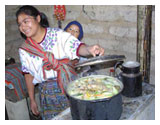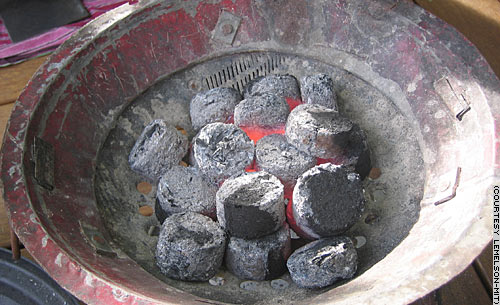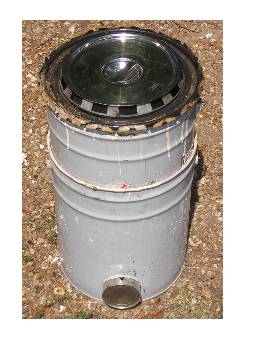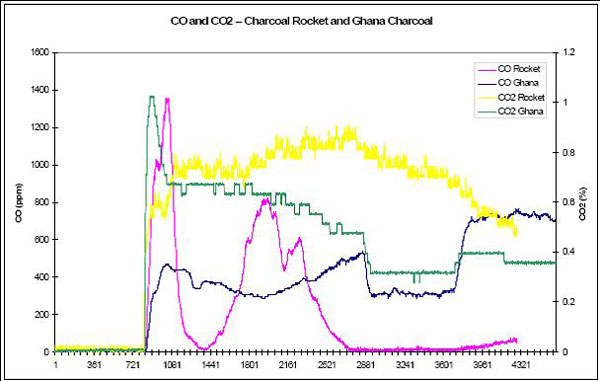Improved Mali Stove
Crispin Pemberton-Pigott, New Dawn Engineering, July 21, 2006
Dear Friends
I have heard confirmation from FASEN in Dakar (Senegal) that the women cooking at the ProBEC head office are using 50% less charcoal with their 'improved Malgach' stove (pronounced mal-gash).
We know this as the garden variety Mali stove - a very simple metal, inverted, truncated pyramid sitting on a square stand with one side missing attached to a flat, square base. There are millions of them all over Africa.
We added a door to close the open side in the stand, and another truncated, inverted pyramid to the top, creating a counter-flow air preheater. The air now only enters from below when it is being lit. There are two bricks in the base to contain heat from the grate and pass it to the incoming air.
The charcoal is loaded in the usual way and lit. A metal rod bent into a triangle is dropped in and a square sheet with a pot skirt is then dropped on top of everything, closing in the fire. The rod keeps the pot off the charcoal - preferably a 50mm gap.
The fact that the women are putting in 1/2 the charcoal normally used is not the end of the story. The stove is designed for 2 kg of charcoal so putting in 1 kg is leaves empty space. In reality the stove could be reduced in size by 30% in length, breadth and height reducing the material cost to approximately that of the original, larger, more wasteful stove. The gap between the two 'pyramids' is 13 to 16mm.





